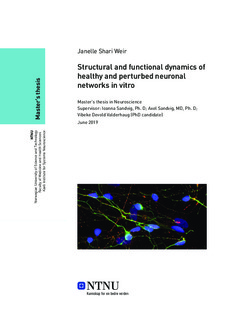| dc.description.abstract | Rapid advancement in the field of morphogenic neuroengineering has led to interesting research perspectives in the area of in vitro neural network modeling using human induced pluripotent stem cell (hiPSC) derived neural lineage cells. When co-cultured with other cell types such as astrocytes, aspects of the in vivo environment are closely recapitulated so that hiPSCs can be maintained long term in vitro and retain their ability to differentiate and express neuron specific markers. Furthermore, hiPSC-derived neurons spontaneously form neural networks that have structural and functional relevance to in vivo systems. These networks exhibit dynamic spontaneous electrophysiological activity that can be monitored using state-of-the-art technologies such as microelectrode arrays (MEAs). This activity is highly stereotypical across multiple networks and is characterized by phase specific properties. In this study, we observed this stereotypical activity as an early primitive phase arising approximately between 07 and 14 days in vitro (DIV); a stable but complex phase of synchrony and network bursts; and finally, a decline phase. Furthermore, we perturbed the neural network via electrical stimulation that was applied through specific electrodes on the MEA. Results show that electrical stimulation completely disrupted endogenous global synchronicity immediately in the neural network as quickly as 20 minutes post perturbation. Furthermore, network synchronization with a distinct temporal structure similar to the applied stimulation persisted in the neural network up to 48 hours post repeated stimulation, thus suggesting an adaptive learning response, which may be indicative of an interplay between Hebbian plasticity, as well as homeostatic plasticity mechanisms. The overarching conclusion of this work is that in vitro models of neural systems on MEAs are relevant for the study of complex neural network behaviours and may be beneficial for studying the interrelated dynamics of Hebbian and homeostatic plasticity that work in tandem to sculpt network behaviour in response to perturbation. | |
